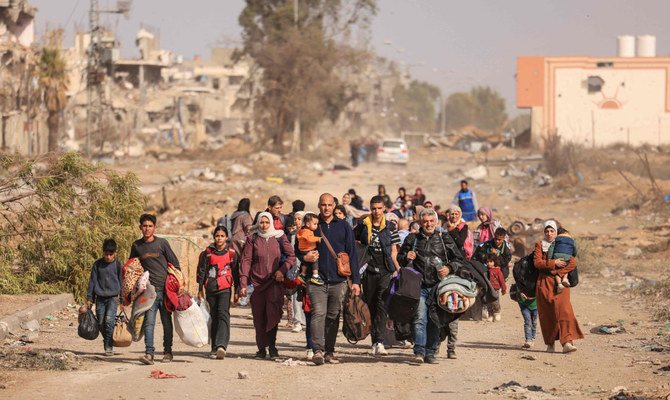Kerry Boyd Anderson
Since Oct. 7, more than 14,000 Palestinians in Gaza, more than 200 Palestinians in the West Bank, and around 1,200 Israelis have been killed in the war. These appalling tolls can lead to “psychic numbing” and “compassion fatigue,” but behind each statistic is a human story.
The rate of fatalities in Gaza is overwhelming. Statistics for deaths in war, natural disasters and other tragedies often feel overwhelming. For example, more than 300,000 civilians have died in the Syrian civil war, according to the UN. Around 200,000 Iraqi civilians died in the war that began in 2003. Human brains struggle to take in the scope of such large-scale catastrophes. The inability to comprehend such numbers often leads people to turn away from the suffering.
Psychological research has shown that people react with relative indifference to statistics and are much more likely to respond to an individual story. For example, there was general apathy toward the huge number of Syrian refugees fleeing the civil war, but a 2015 photo of the dead body of a little Syrian child named Aylan lying on a Turkish beach galvanized many people into action, including increased donations to relevant charities. Similarly, many people overlooked discrimination against black Americans for decades, but the videos of George Floyd dying led to a global outcry.
There are several reasons why one individual’s suffering can grab more attention and generate more empathy than the suffering of thousands.
People relate more to stories than statistics. Human beings are driven by stories that connect to our emotions and experiences. For example, it is difficult to comprehend what it means for more than 200 Israelis to be hostages in Gaza, but most people can emotionally connect to the suffering of a three-year-old child who was kidnapped after her parents were killed. It is difficult to wrap our minds around the extreme suffering of more than 2 million people in Gaza, but when we see the video of a journalist finding the bodies of his loved ones in rubble or in a hospital, we can deeply relate to his pain. The photos of premature babies in a Gaza hospital who should be in incubators tugged at the hearts of many people and most especially parents who have had premature babies. Intellectually, people know that Palestinians in the West Bank are enduring increased violence, but it is easier to connect to what it is like for parents to feel unable to protect their terrified children when Israeli settlers attack.
While people relate much more easily to stories than numbers, too many harrowing stories can overwhelm us. Psychology studies, for example, have found that compassion tends to decrease as a person is exposed to more tragic tales. People start to tune out when deluged with narratives or images of suffering. Problems that seem far too big for us to have any positive impact can quickly lead to feelings of hopelessness and powerlessness. Overwhelming suffering can undermine a sense of efficacy. Human beings naturally feel more capable of helping one person in need compared to thousands of people.
A related reason why large statistics can erode empathy is that people’s hearts simply cannot bear it. When confronted with extensive stories of suffering or huge numbers of deaths, people often either drown in grief or build a mental wall of indifference to protect themselves. This is part of psychological numbing.
One natural — but often far from admirable — coping strategy is to be “groupish,” to use a term from Jonathan Haidt’s book “The Righteous Mind.” People often choose to prioritize the suffering of their own identity group, which could be based on shared religion, nationality, ethnicity or something else. However, this approach can feed into cycles of anger and grievance that fuel more conflict and suffering.
There are more positive ways to respond. First, people can learn about psychological numbing and be aware of its impact in their own lives; such awareness helps people to make more logical and effective decisions.
Second, we can focus on the people and communities around us. While a negative “groupish” approach focuses on threats to identity groups, a more positive variation looks at how we can support our surrounding communities. This might mean doing more to help our families or other people near us, or it might mean finding and working with like-minded people around us to have an impact farther afield.
Third, pick something and do something. Most people do not have the energy and resources to actively contribute to multiple causes, but that is not a reason to give up. We can choose one or two issues to focus on and remain committed to those. Then, we can take action. The enormity of problems often discourages people from responding, but multiple small actions can add up to big results. Finding ways to cooperate with others also helps make actions more impactful. For example, one person giving some money to help others might seem miniscule, but many people giving even small amounts adds up quickly.
Finally, remember that the grief and empathy people feel in response to other’s pain is a good thing — it hurts, but it connects us to our humanity and can push us to help others and to make positive change. Sometimes, we just need to find ways to channel that empathy in positive directions.







